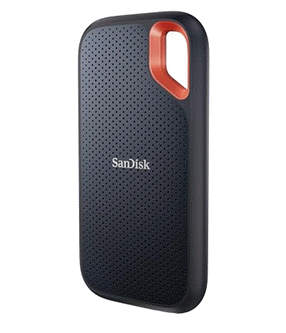2025-06-19 23:44:00
www.caltech.edu
The vast majority of matter in the universe is dark—it is entirely invisible and detected only through its gravitational effects. Ordinary matter—everything from protons to planets to people—makes up only 16 percent. Unlike dark matter, ordinary matter emits light of various wavelengths and thus can be seen. But a large chunk of it is diffuse and spread thinly among halos that surround galaxies as well as in the vast spaces between galaxies.
Due to its diffuse nature, roughly half of ordinary matter in the universe went unaccounted for and had been considered “missing”—until now.
In a new study in Nature Astronomy, a team of astronomers at Caltech and the Center for Astrophysics | Harvard & Smithsonian (CfA) has, for the first time, directly detected and accounted for all the missing matter. To do this, the team used brief, bright radio flashes in the distant cosmos, called fast radio bursts (FRBs), to illuminate the matter lying between the FRBs and us.
“The FRBs shine through the fog of the intergalactic medium, and by precisely measuring how the light slows down, we can weigh that fog, even when it’s too faint to see,” says Liam Connor, assistant professor at Harvard and lead author of the study, who performed much of the work while a Caltech research assistant professor working with Vikram Ravi, assistant professor of astronomy at Caltech.
The study looked at a total of 69 FRBs located at distances ranging from about 11.74 million to about 9.1 billion light-years away. The object 9.1 billion light-years away, named FRB 20230521B, now holds the record for the most distant FRB ever recorded. While more than a thousand FRBs have been detected, only about a hundred have been pinpointed to specific host galaxies; in other words, their origins and distances from Earth are known. These localized FRBs were needed for the current study.
Of the 69 localized FRBs in the study, 39 were found using the DSA (Deep Synoptic Array)-110, a National Science Foundation (NSF)-funded network of 110 radio telescopes located at Caltech’s Owen Valley Radio Observatory (OVRO), near Bishop, California. The radio array, which was designed specifically to catch and localize FRBs, detected the 39 objects and identified their galaxy of origin, while instruments at Hawaii’s W. M. Keck Observatory and at the Palomar Observatory near San Diego ascertained their distance. The 30 other FRBs in the study were discovered by telescopes around the world, primarily the Australian Square Kilometre Array Pathfinder.
These FRBs, though fascinating in their own right, were used in this study to detect the missing ordinary matter; other techniques had only hinted at its existence. As radio-frequency light travels from the FRBs to Earth, the light becomes spread out into different wavelengths like a prism turns sunlight into a rainbow. The degree of this spreading, or dispersion, depends on how much matter is in the path of the light.
“It’s like we’re seeing the shadow of all the baryons, with FRBs as the backlight,” says Ravi. “If you see a person in front of you, you can find out a lot about them. But if you just see their shadow, you still know that they’re there and roughly how big they are.”
The results revealed that 76 percent of the universe’s normal matter lies in the space between galaxies, also known as the intergalactic medium. About 15 percent resides in galaxy halos, and the remainder is concentrated within galaxies—in stars or in cold galactic gas. This distribution lines up with predictions from advanced cosmological simulations but has never been observationally confirmed until now.
The findings will help researchers better understand how galaxies grow, and also demonstrate how FRBs can help with problems in cosmology, including the determination of the typical mass of subatomic particles called neutrinos. (The neutrino mass depends on the degree to which baryons cluster.) The standard model of physics predicts that neutrinos should have no mass, but observations have shown that these particles do have an incredibly tiny amount. Knowing the precise mass of neutrinos may therefore lead to new physics beyond the standard model of particle physics.
According to Ravi, this is just the beginning of the use of FRBs in cosmology. In the future, Caltech’s DSA-2000 radio telescope in the Nevada desert, currently in the planning stage, will build upon studies like this one. The radio array will find and localize up to 10,000 FRBs per year, dramatically enhancing their role as probes of normal matter and deepening our overall knowledge of the extreme blasts.
The study titled “A gas rich cosmic web revealed by partitioning the missing baryons,” was funded by the NSF. Other Caltech authors include Kritti Sharma (MS ’24), Stella Koch Ocker, Jakob Faber (MS ’24), Gregg Hallinan, Charlie Harnach, Greg Hellbourg, Rick Hobbs, David Hodge, Mark Hodges, Nikita Kosogorov (MS ’24), James Lamb, Casey Law, Paul Rasmussen, Myles Sherman, Jean Somalwar, Sander Weinreb, and David Woody.
Keep your files stored safely and securely with the SanDisk 2TB Extreme Portable SSD. With over 69,505 ratings and an impressive 4.6 out of 5 stars, this product has been purchased over 8K+ times in the past month. At only $129.99, this Amazon’s Choice product is a must-have for secure file storage.
Help keep private content private with the included password protection featuring 256-bit AES hardware encryption. Order now for just $129.99 on Amazon!
Help Power Techcratic’s Future – Scan To Support
If Techcratic’s content and insights have helped you, consider giving back by supporting the platform with crypto. Every contribution makes a difference, whether it’s for high-quality content, server maintenance, or future updates. Techcratic is constantly evolving, and your support helps drive that progress.
As a solo operator who wears all the hats, creating content, managing the tech, and running the site, your support allows me to stay focused on delivering valuable resources. Your support keeps everything running smoothly and enables me to continue creating the content you love. I’m deeply grateful for your support, it truly means the world to me! Thank you!
|
BITCOIN
bc1qlszw7elx2qahjwvaryh0tkgg8y68enw30gpvge Scan the QR code with your crypto wallet app |
|
DOGECOIN
D64GwvvYQxFXYyan3oQCrmWfidf6T3JpBA Scan the QR code with your crypto wallet app |
|
ETHEREUM
0xe9BC980DF3d985730dA827996B43E4A62CCBAA7a Scan the QR code with your crypto wallet app |
Please read the Privacy and Security Disclaimer on how Techcratic handles your support.
Disclaimer: As an Amazon Associate, Techcratic may earn from qualifying purchases.
































![THYMESIA | 16 MINUTES OF GAMEPLAY | [1080P 60 FPS]](https://techcratic.com/wp-content/uploads/2025/09/1757557932_maxresdefault-360x180.jpg)









































































